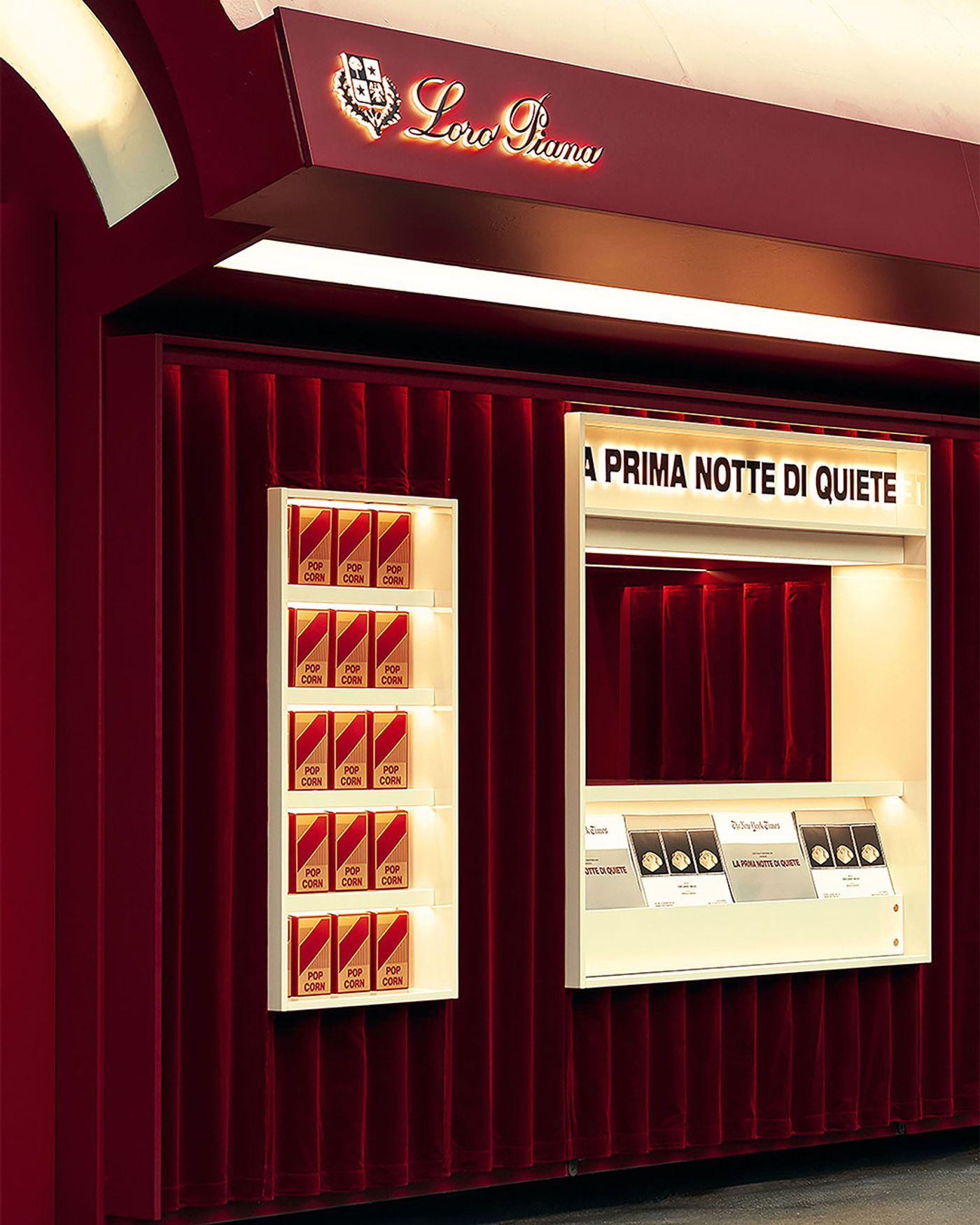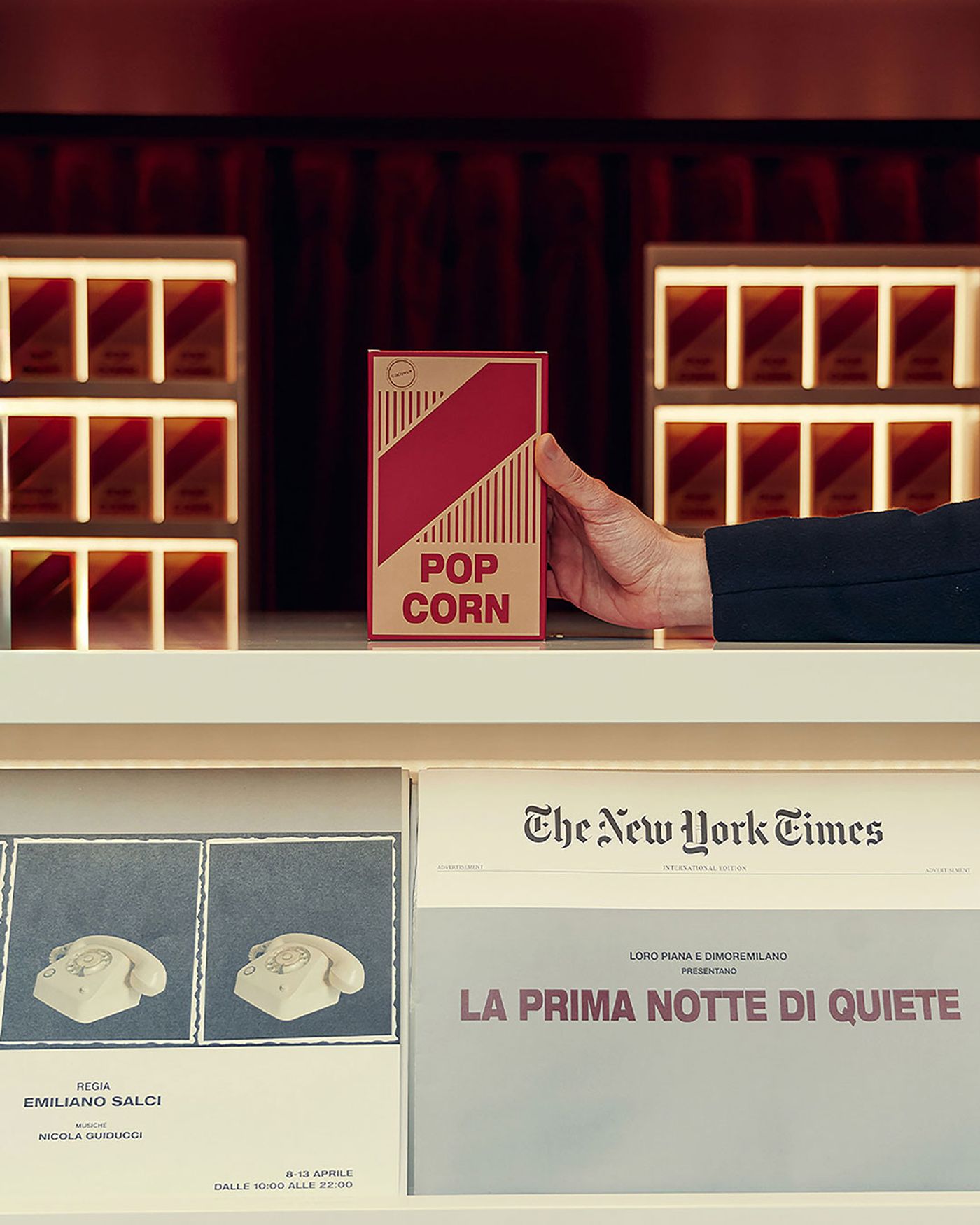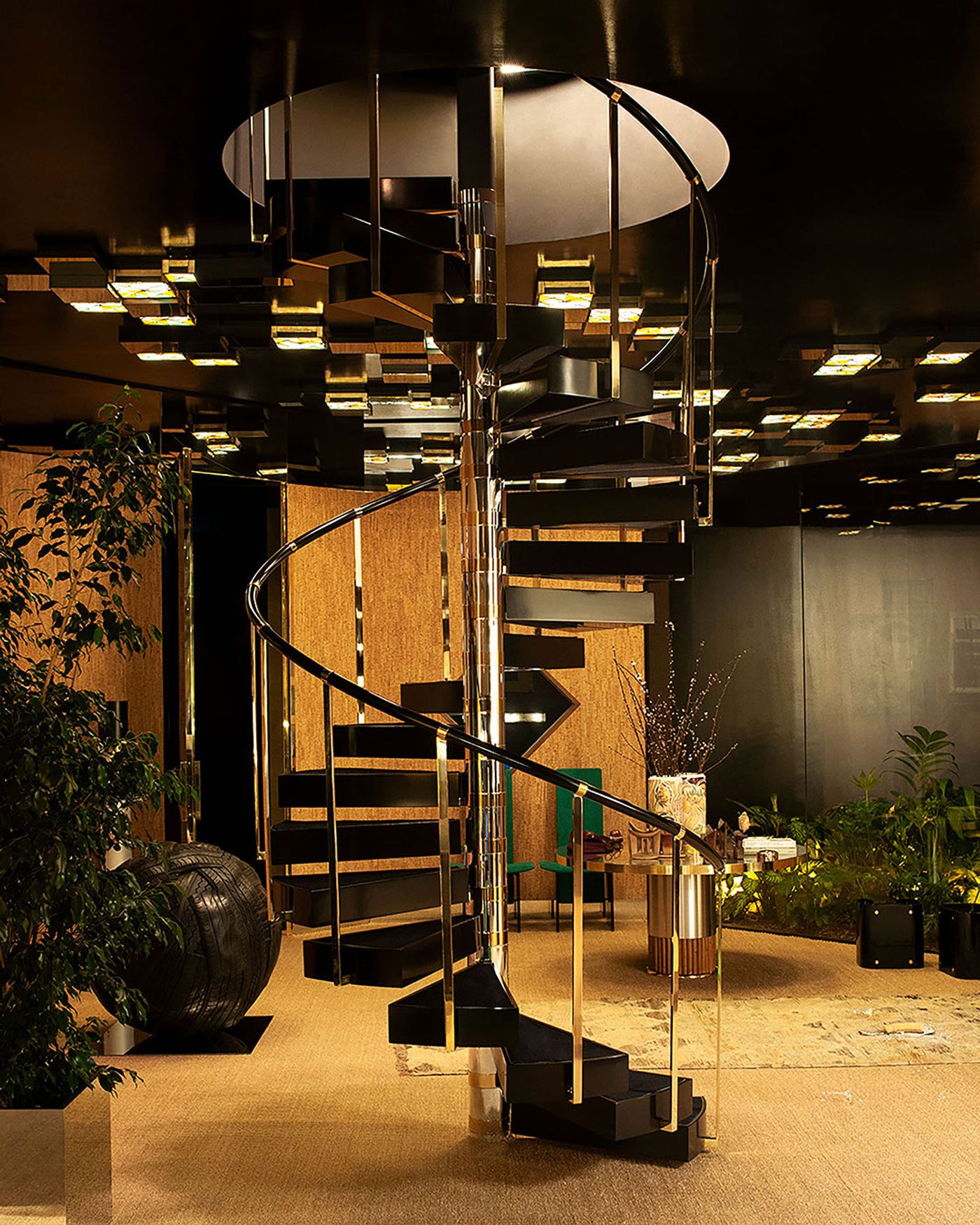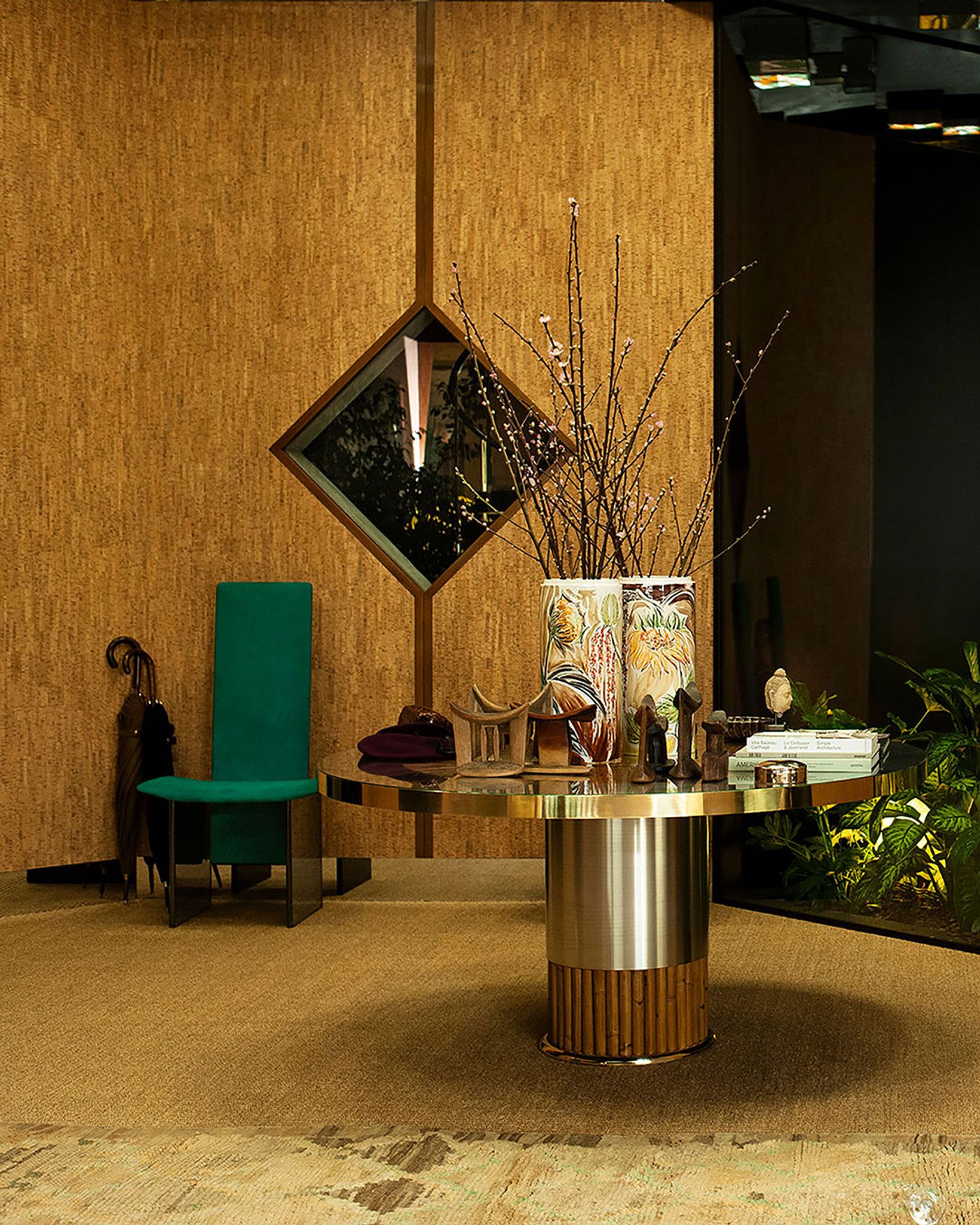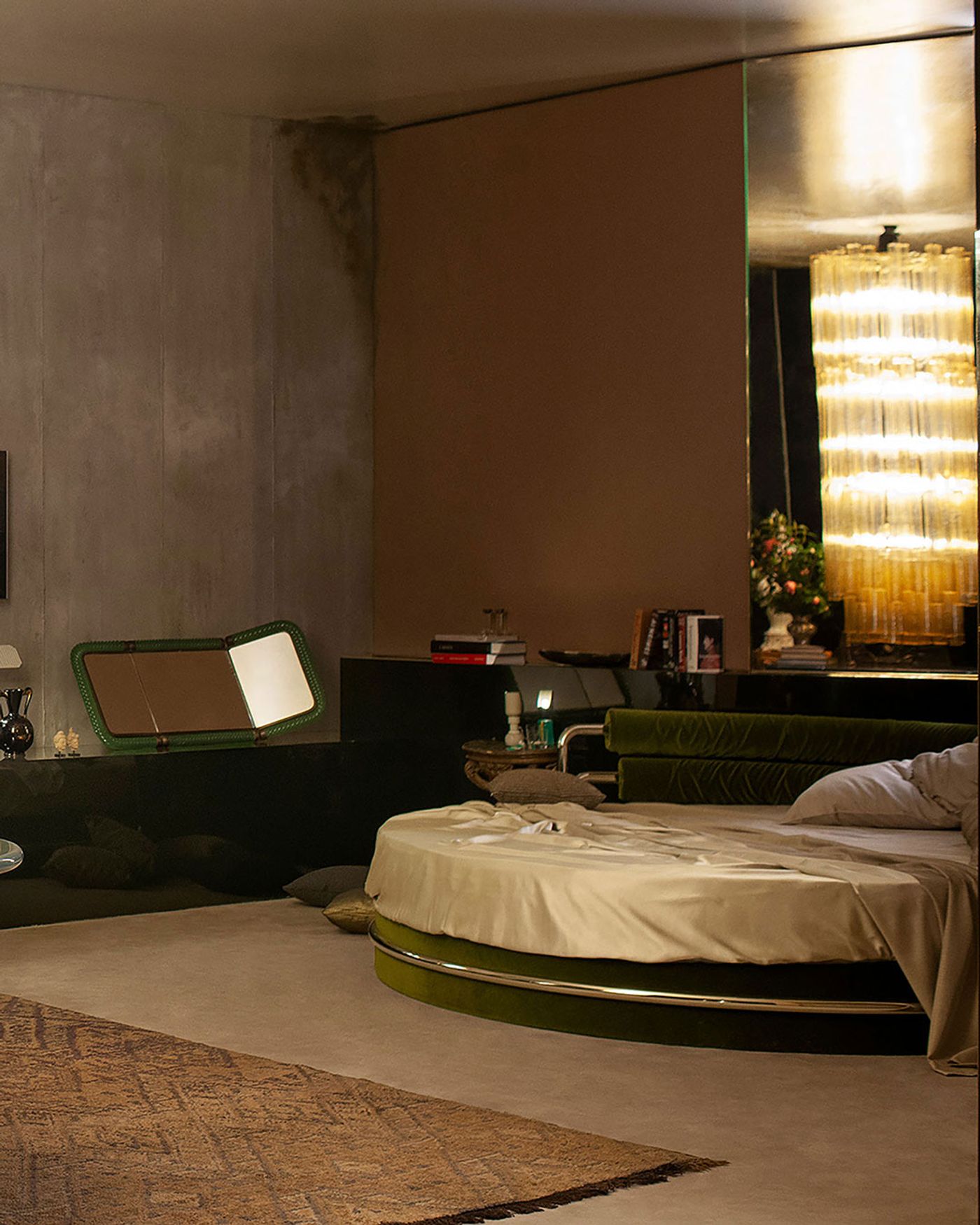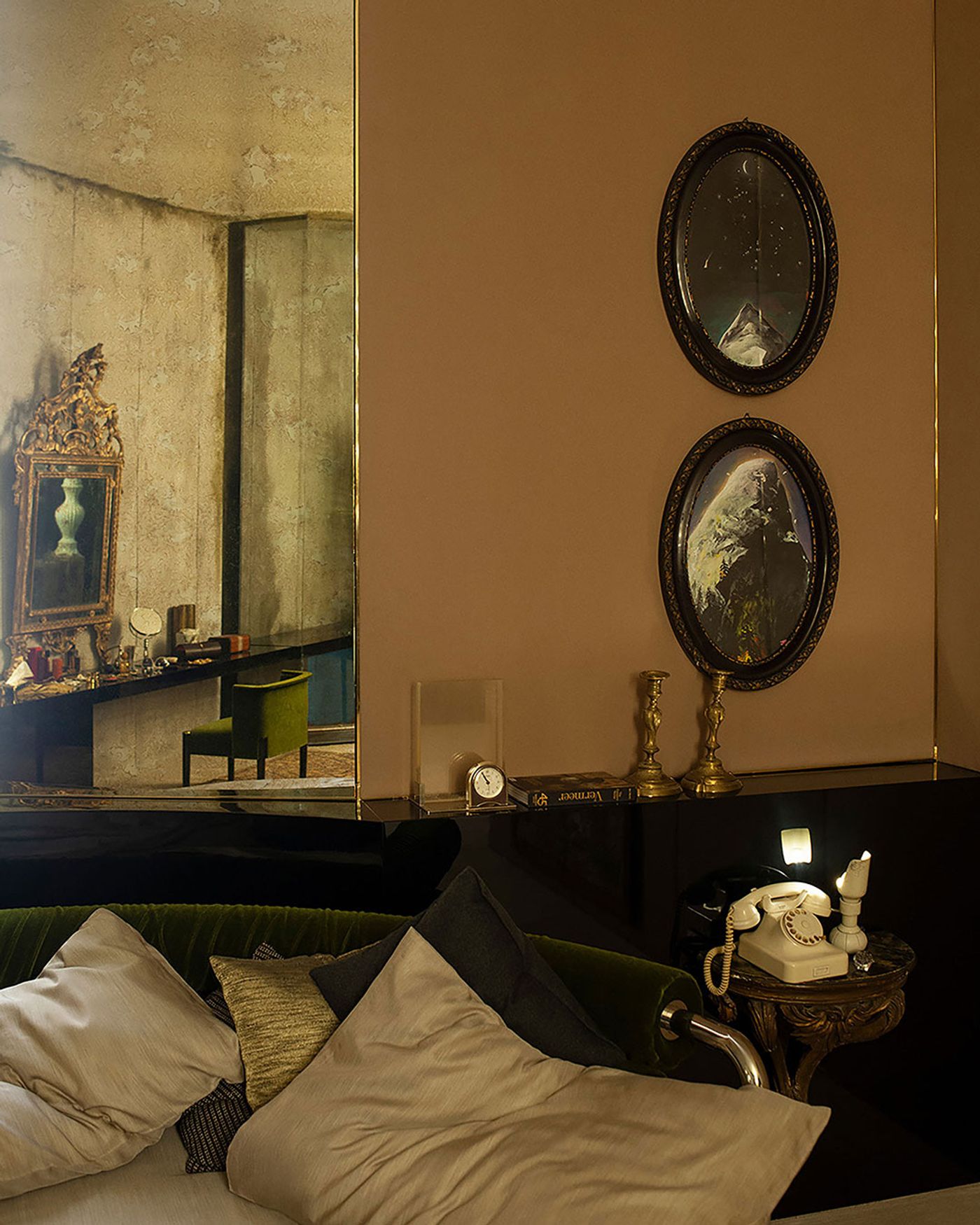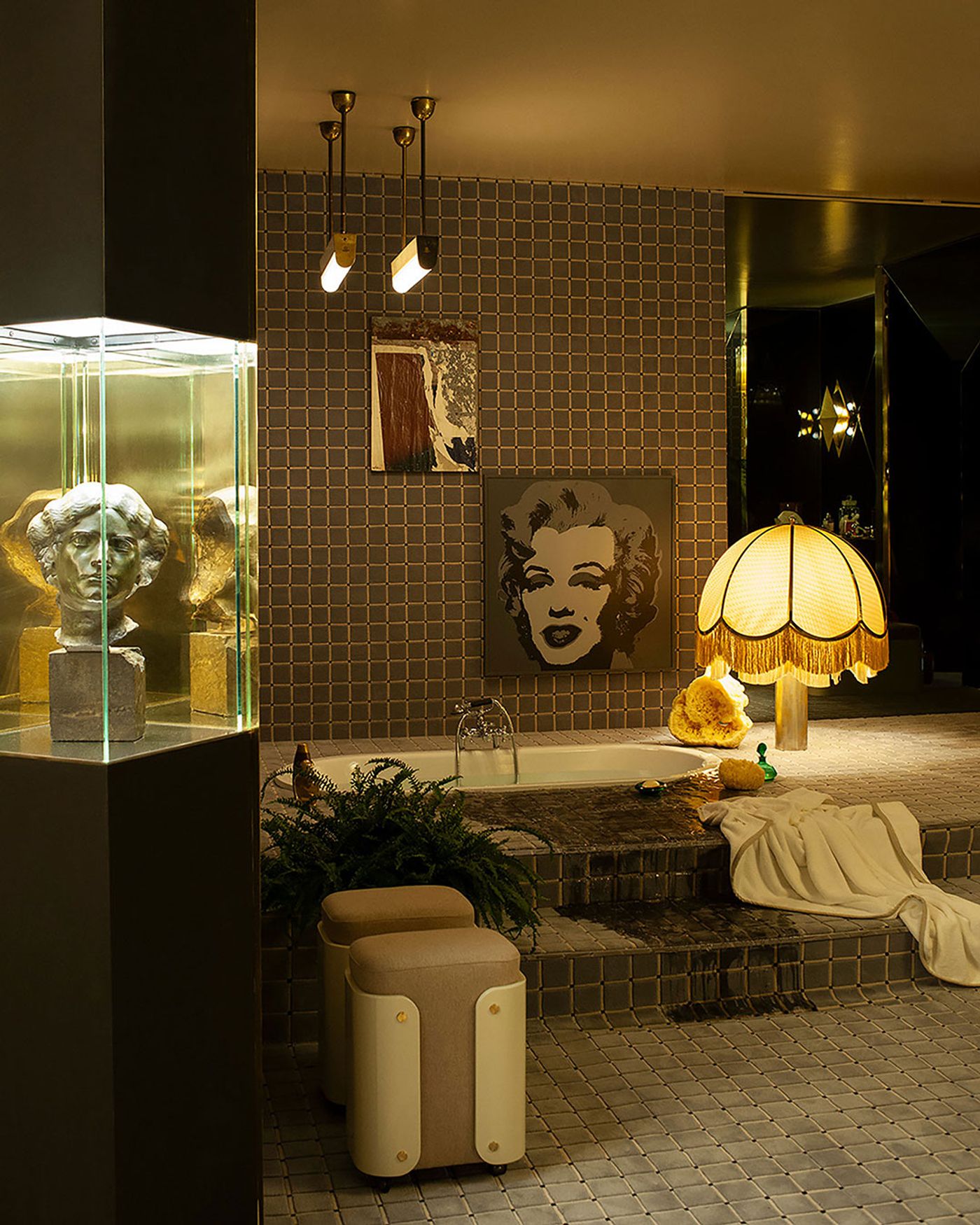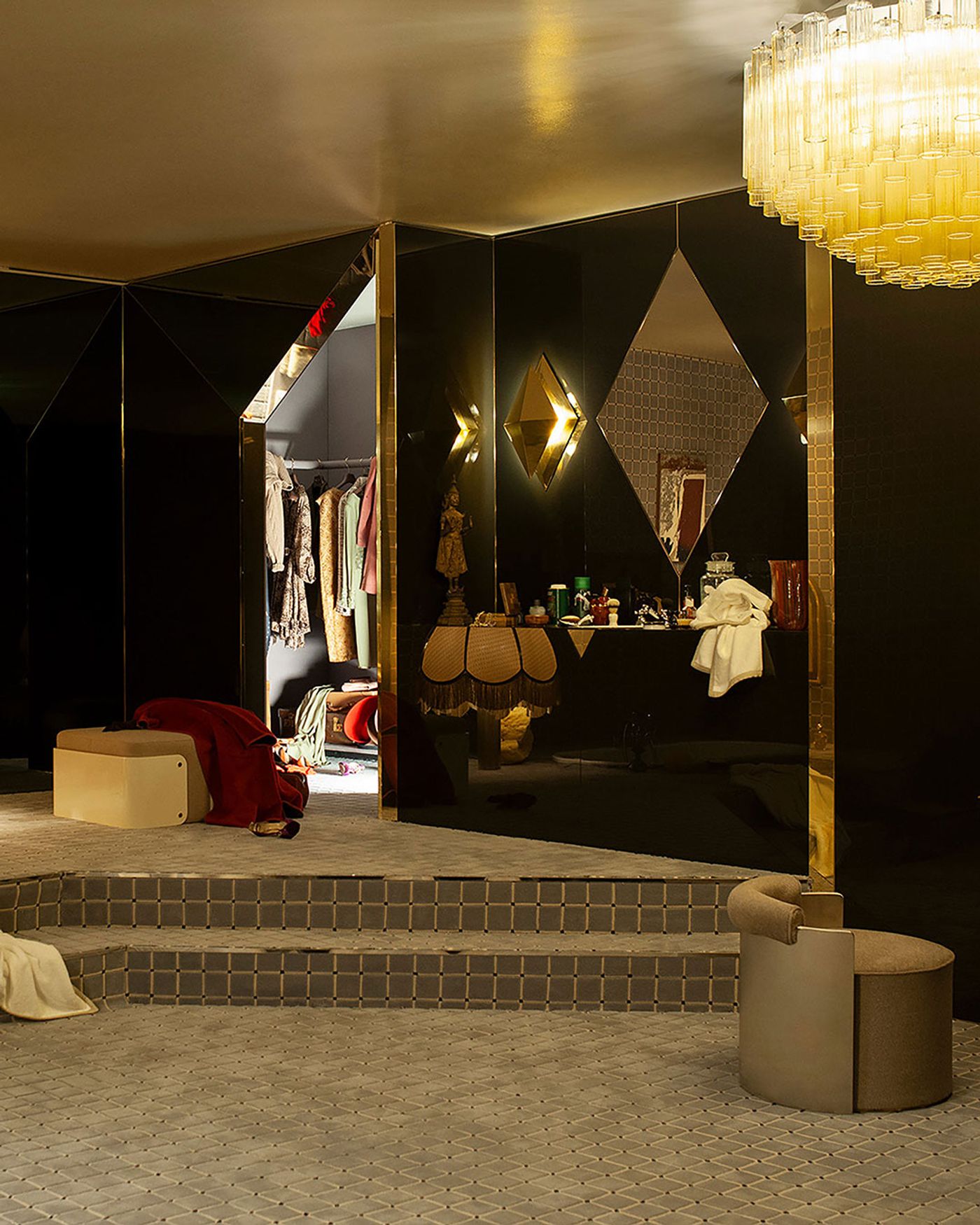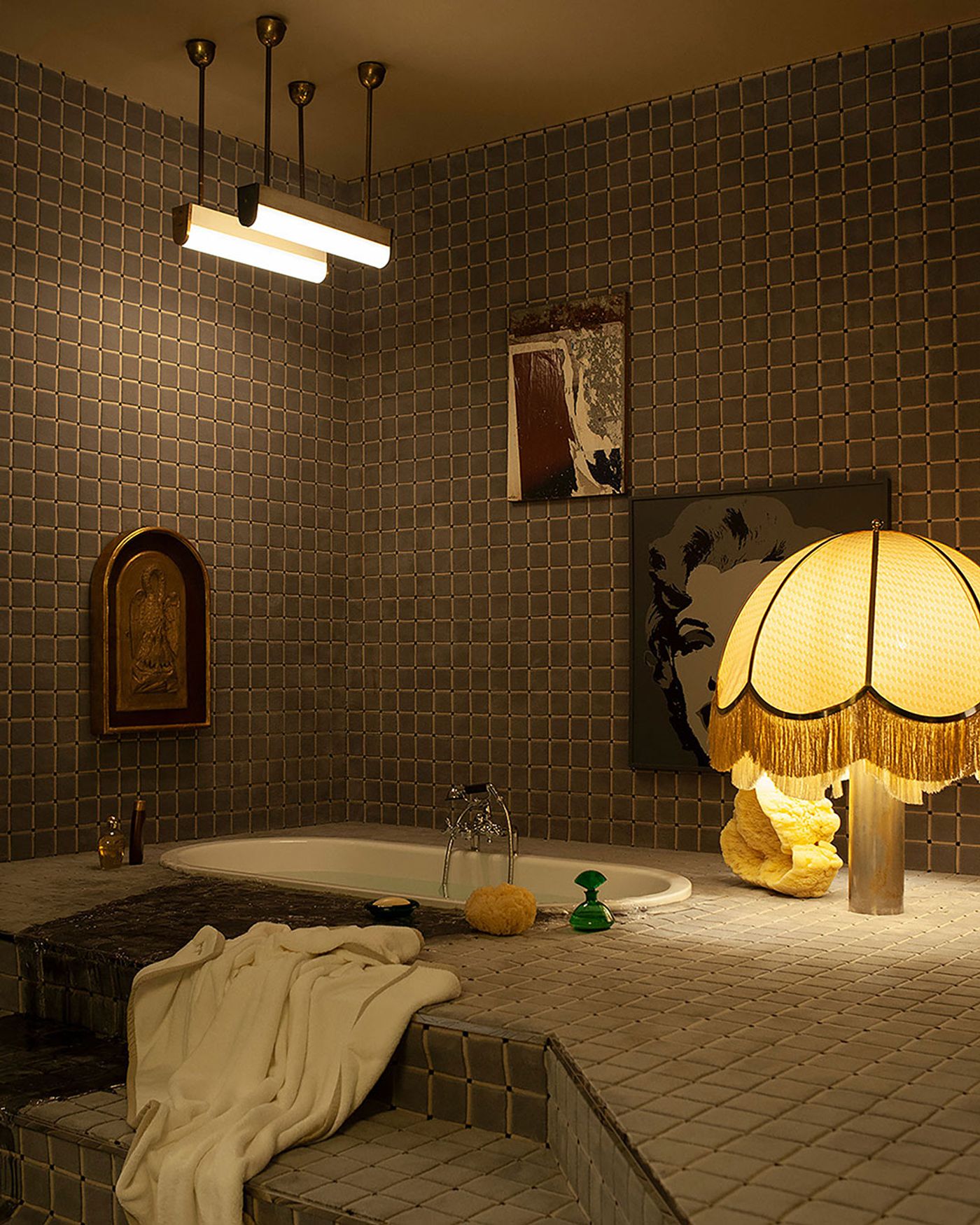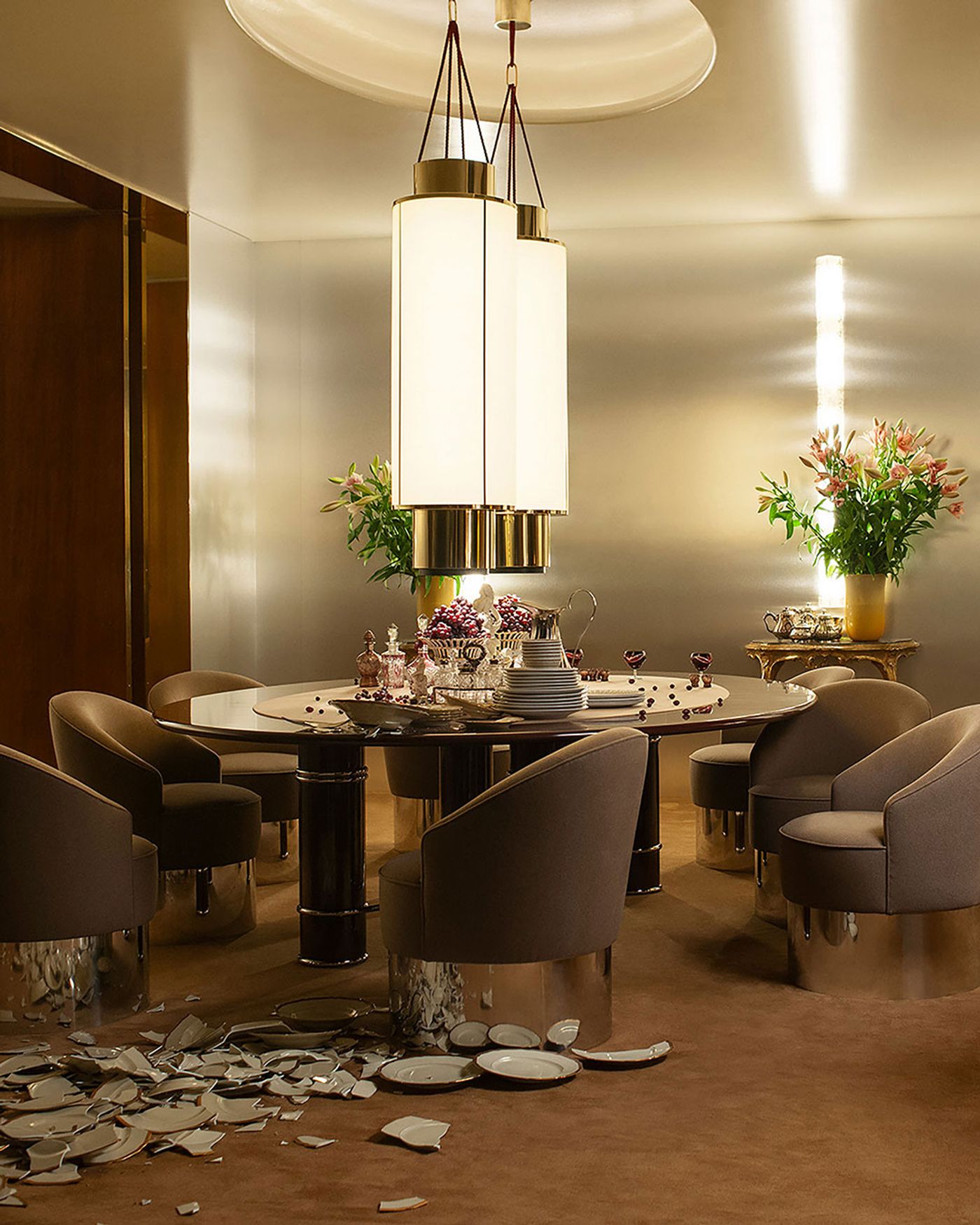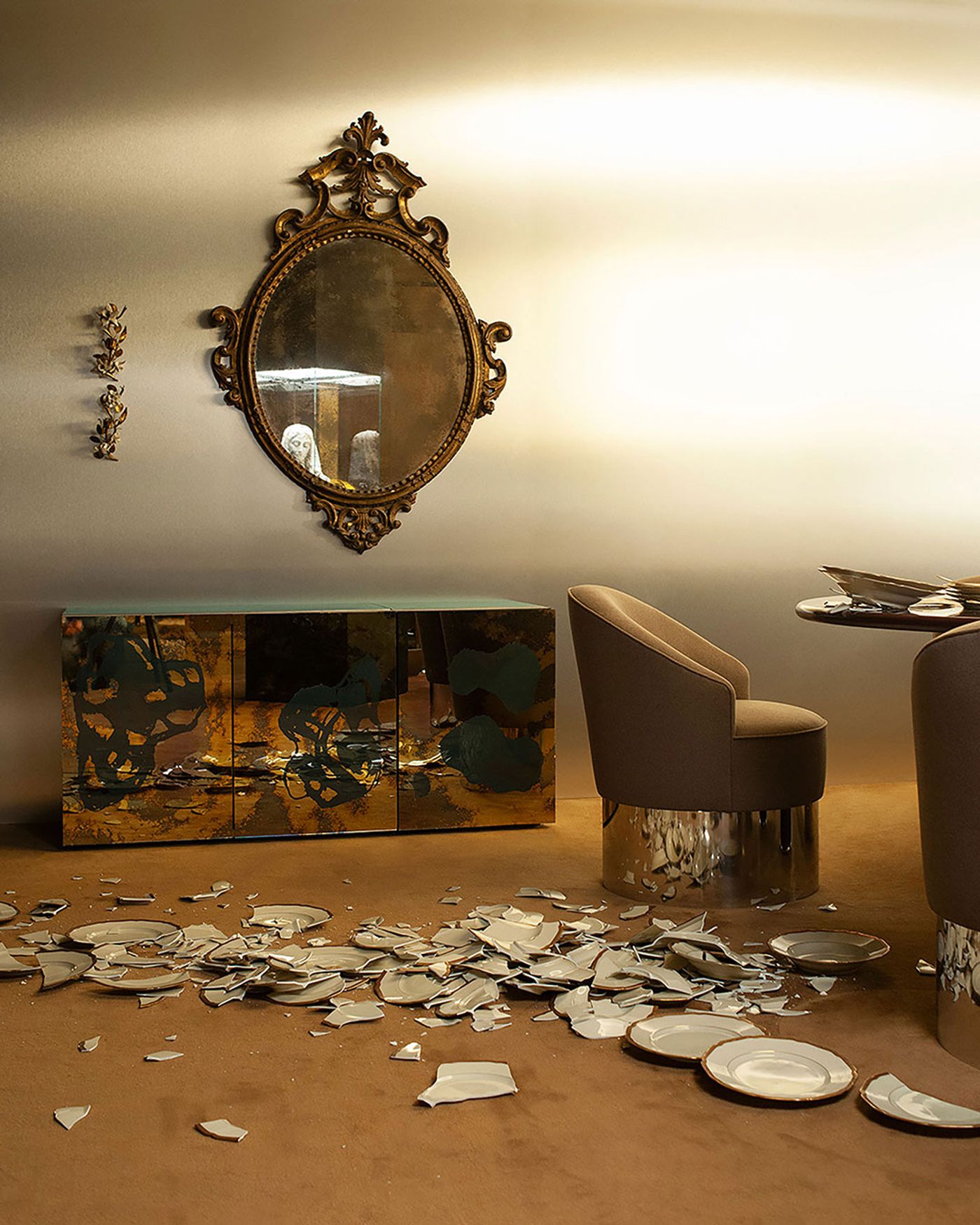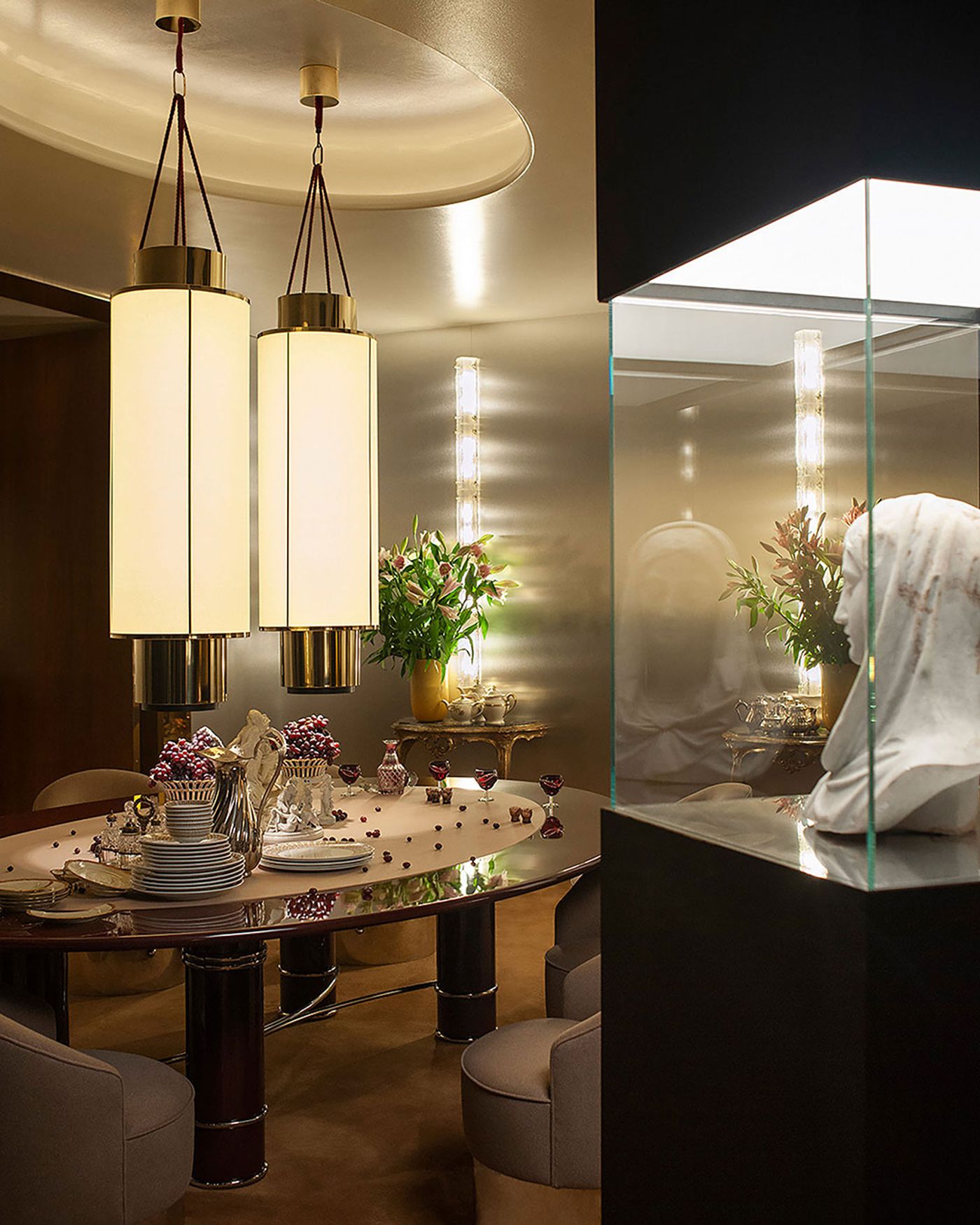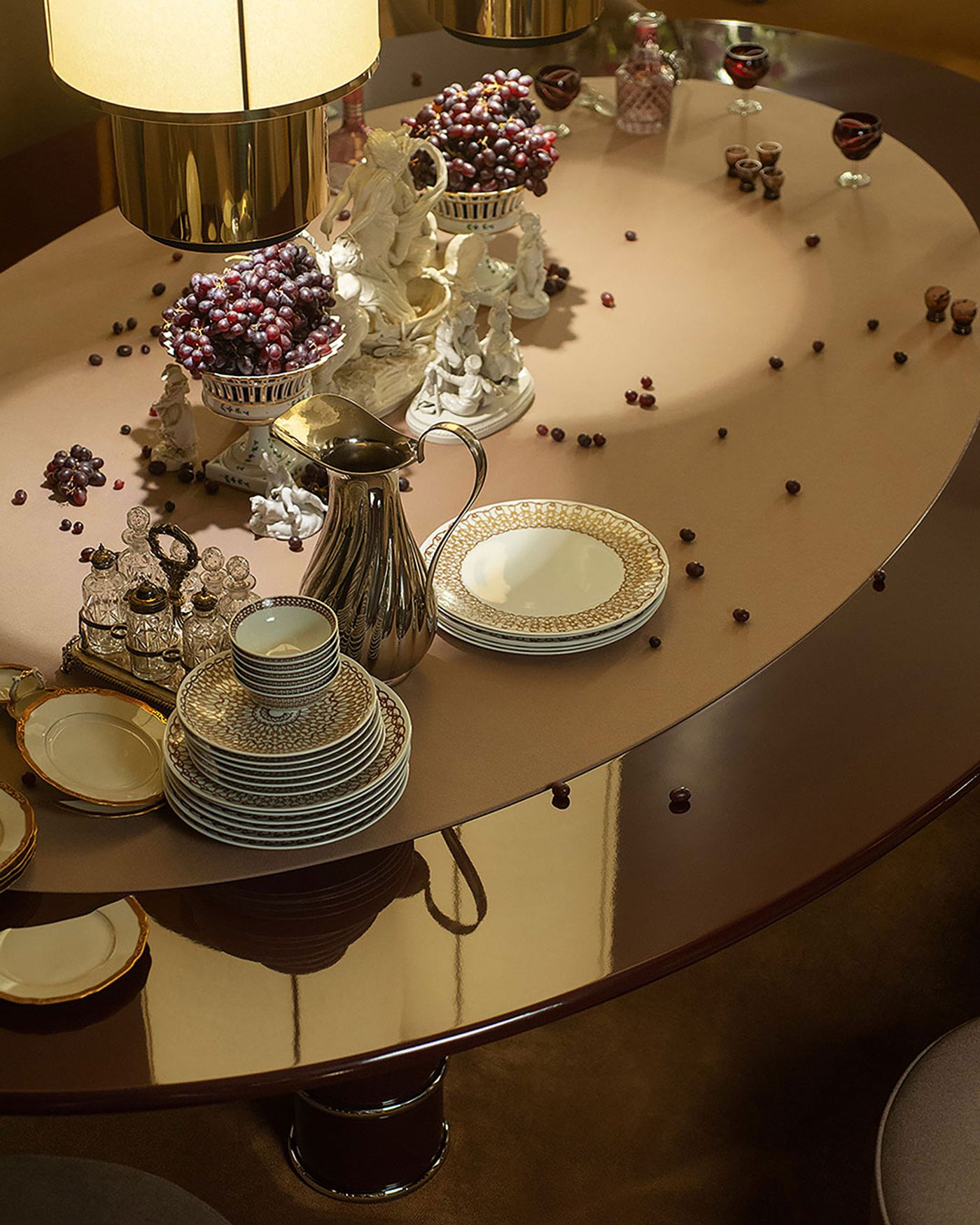Loro Piana and Dimoremilano Blur Fiction and Reality in a Cinematic Installation at Milan Design Week 2025
Words by Yatzer
Location
Milan, Italy
Loro Piana and Dimoremilano Blur Fiction and Reality in a Cinematic Installation at Milan Design Week 2025
Words by Yatzer
Milan, Italy
Milan, Italy
Location
Of all the design showcases around the world, Milan Design Week remains the most prominent; its influence stemming as much from its long history as from its decentralized, city-wide scope that allows for more experimental and immersive installations in diverse locations such as historic palazzos, showrooms, galleries, and restored industrial sites. With that being said, the sheer number of creative endeavours means that it takes a certain je-ne-sais-quoi for a setup to truly stand out; one of these during this year’s event is undoubtedly Loro Piana’s La Prima Notte di Quiete (April 8–13, 2025), a dreamlike installation in collaboration with Dimoremilano taking over the central courtyard of the Maison’s Milan headquarters.
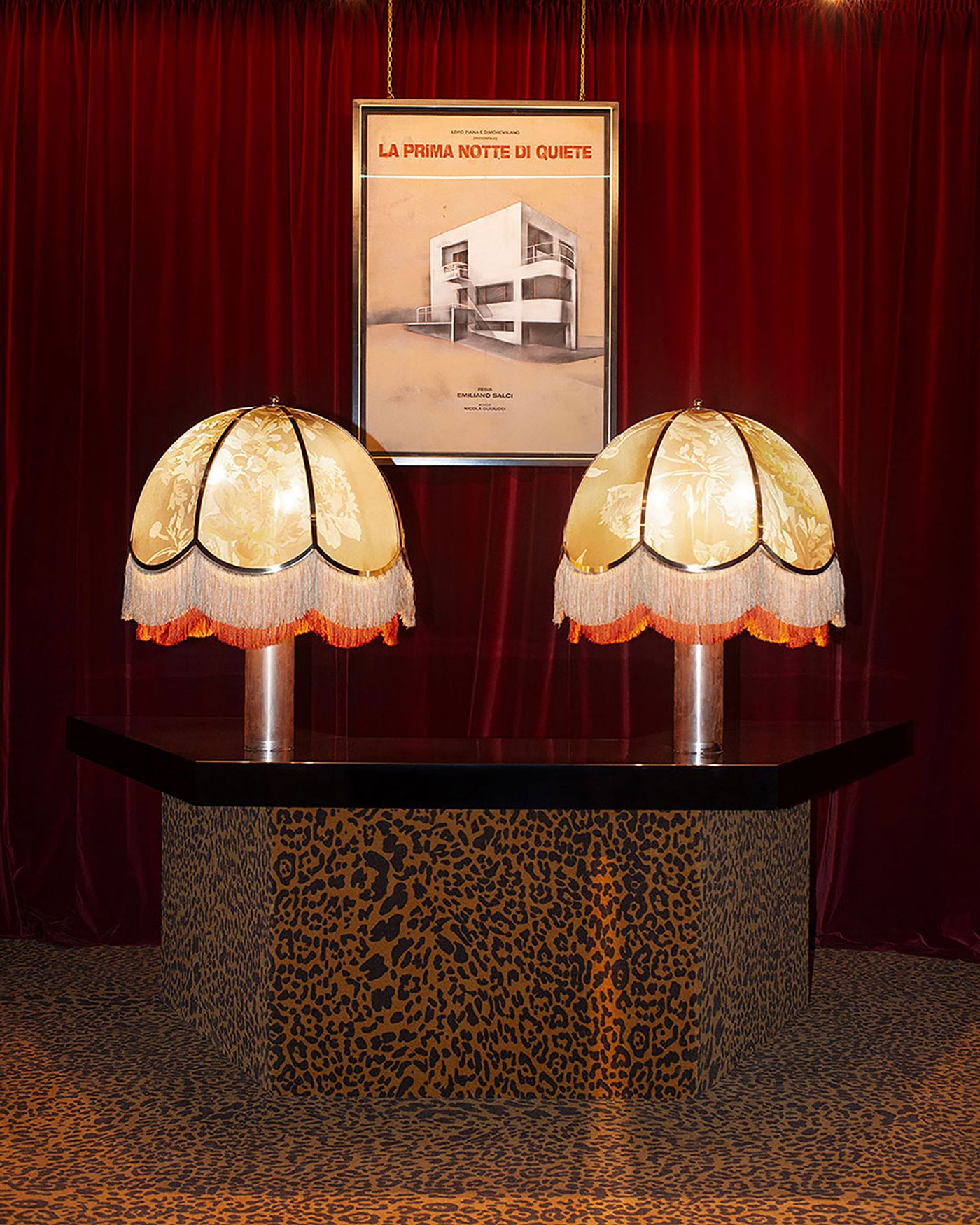
Photography © Loro Piana.
Loro Piana and Dimoremilano for Milan Design Week 2025 - “La Prima Notte Di Quiete”.
Designed by Dimorestudio as a 1970s and 1980s-inspired Milanese apartment, the setup features new and iconic pieces from Loro Piana Interiors and Dimoremilano mixed with antiques and contemporary artworks—so far so good—but what makes this project so unlike your typical MDW showcase is that it was conceived as a cinematic experience; visitors are guided through the house, each room lighting up one after the other, accompanied by an eerie soundtrack of familiar sounds and jarring interruptions that conjure the unnerving stillness after some kind of dramatic climax. Only four minutes in duration, the experience nevertheless evocatively blurs the boundaries of reality and fiction reminiscent of the films created by the likes of Antonioni, Visconti, or Sorrentino—at least that’s how we felt when we visited the installation. Emphasising this even further, a ticket kiosk, complete with a popcorn stand, can be found on Via de Giardini, a short walk from the venue, mischievously blurring the line between installation and screening.
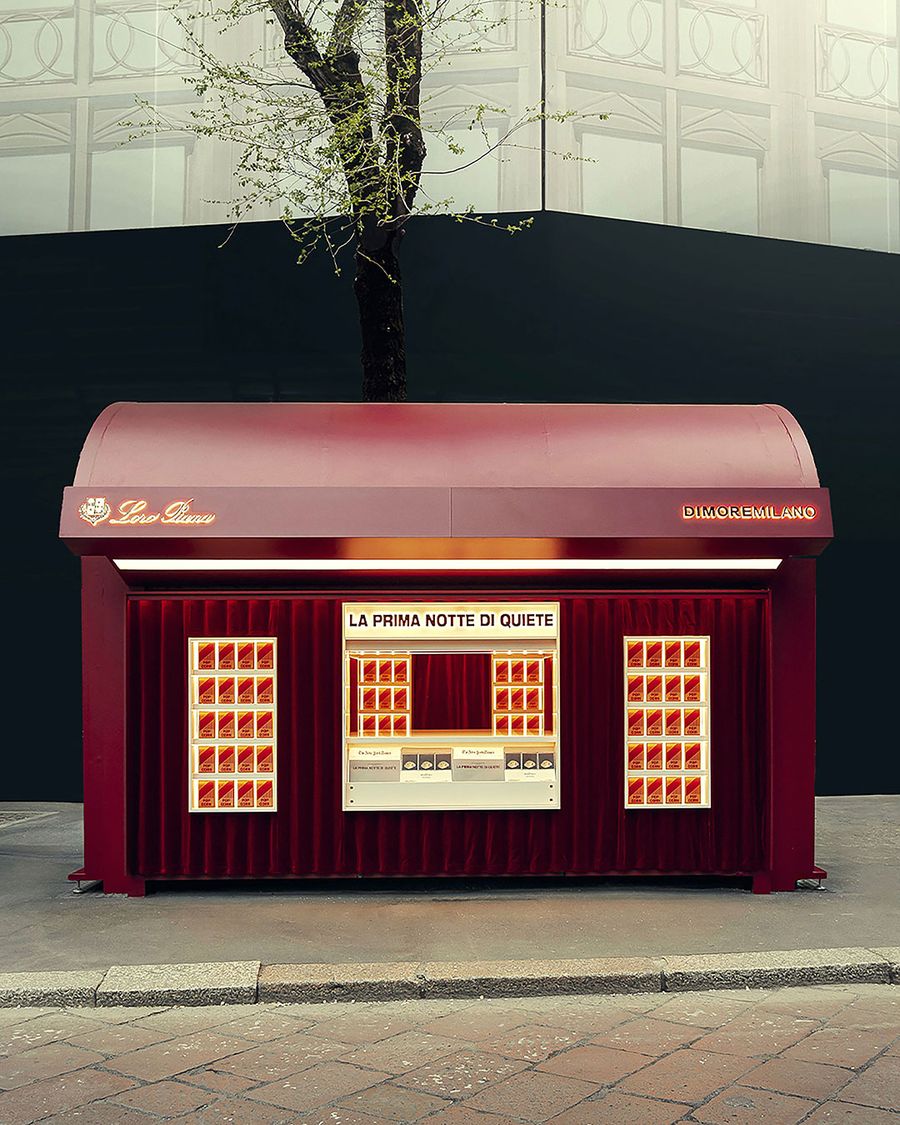
Photography © Loro Piana.
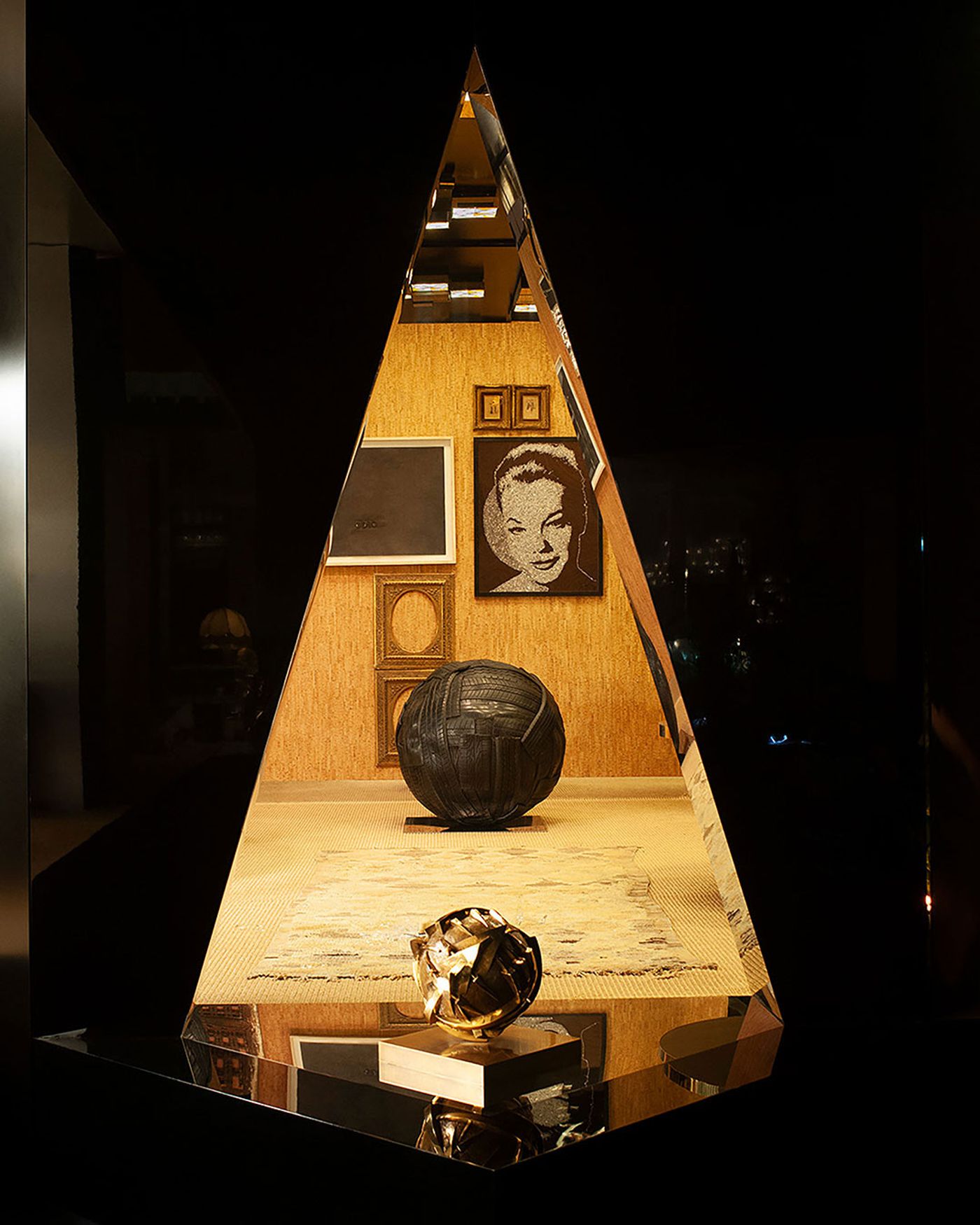
Photography © Loro Piana.
Visitors enter what feels less like a set and more like a dream. Room by room, the apartment reveals itself in a cinematic sequence, beginning with an entrance hallway and followed by a plush living room, a dining area, a moody bedroom, a fully staged bathroom, and finally a small garden. Throughout the home, there’s a palpable sense of stillness underpinned by an uncanny sensation that something has just happened—A party? A storm? A heartbreak?—a feeling conjured by Dimorestudio’s subtly disjointed mise-en-scène and multimedia artist Nicola Guiducci’s eerie, fragmented soundtrack.

Photography © Loro Piana.
A distant piano melody, a phone ringing, a woman answering it—all these aural cues add to the sensation that we are intruding on something private, sacred, and unresolved. Rain patters softly on the windows, not just audibly—but visibly, thanks to special effects that create the illusion of droplets tracing down window panes. It’s a subtle but spine-tingling touch, and one that speaks to Dimorestudio’s conceptual rigour. Add to this the bathroom, soft-lit and slightly surreal, an overflowing bathtub seems caught mid-emotion in a moment of domestic chaos paused in time. “It’s called The First Night of Stillness,” explains co-founder Britt Moran, “but the idea was to give viewers a sort of feeling of a storm outside, while the home inside is much calmer, quieter—a much more reassuring atmosphere.”
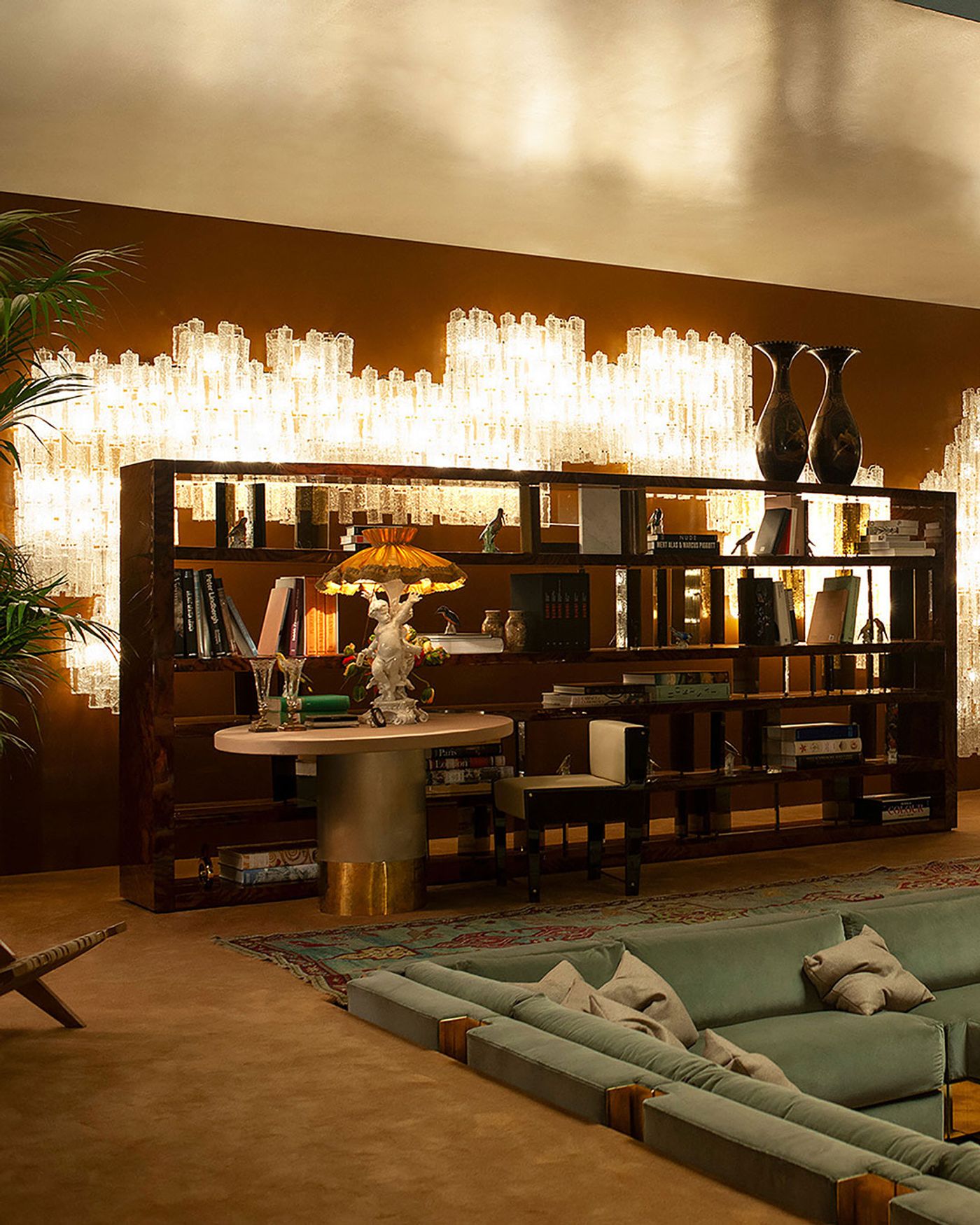
Photography © Loro Piana.

Photography © Loro Piana.
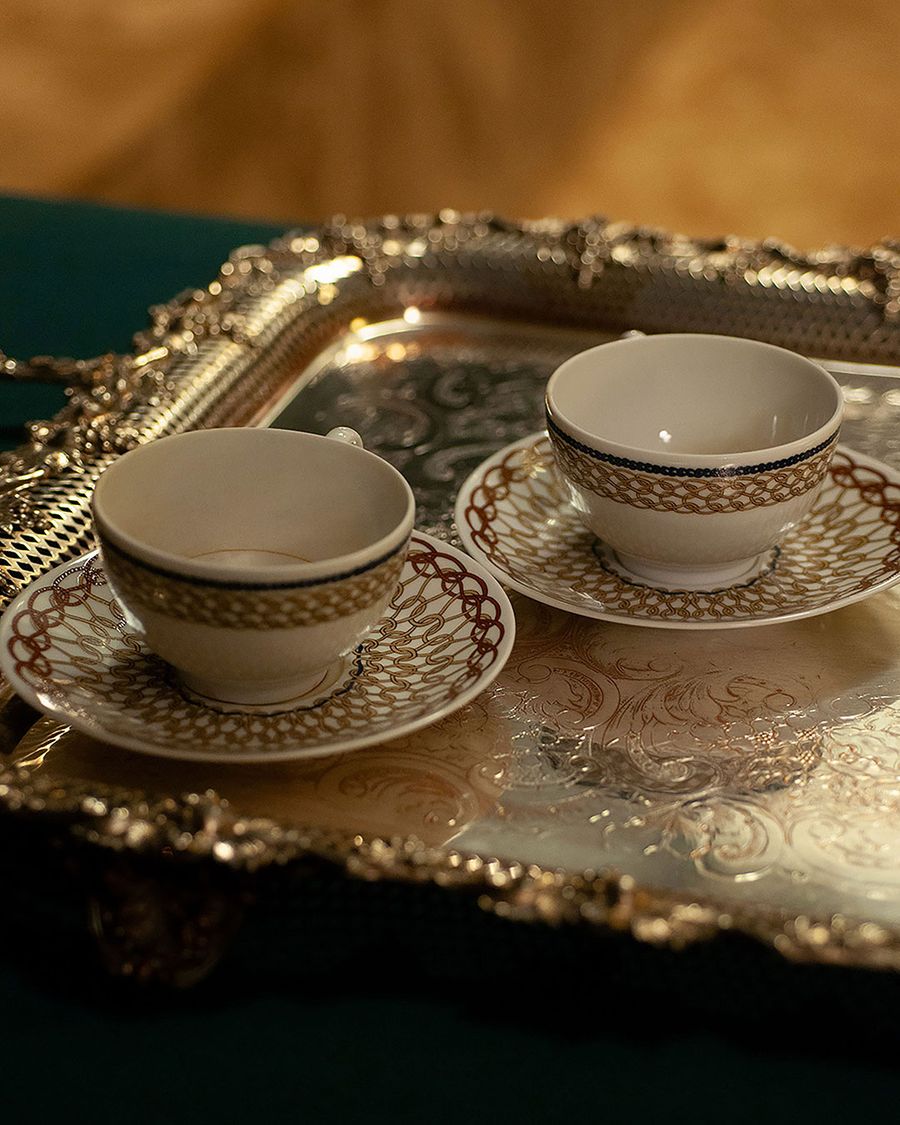
Photography © Loro Piana.
Video © Loro Piana.
The apartment is fully furnished, but nothing feels staged. Rather, it resembles the home of someone with impeccable, and wonderfully contradictory, taste. This is Dimorestudio’s hallmark: an unconventionally chic layering of eras, moods, and textures. Every piece has character, yet none of it screams for attention. “Our way of working is always inspired by the entire 20th century,” notes Emiliano Salci, the other half of Dimorestudio. “But for this project, our focus went more toward the 1960s, 70s, and 80s, with a very Italian style.” That influence hums beneath every surface: the brass appliqués, the low-slung sofas, the leopard-print carpeting in the foyer. Yet it’s never nostalgic. Instead, it feels alive as if the house itself is remembering its own past in flickering glimpses.
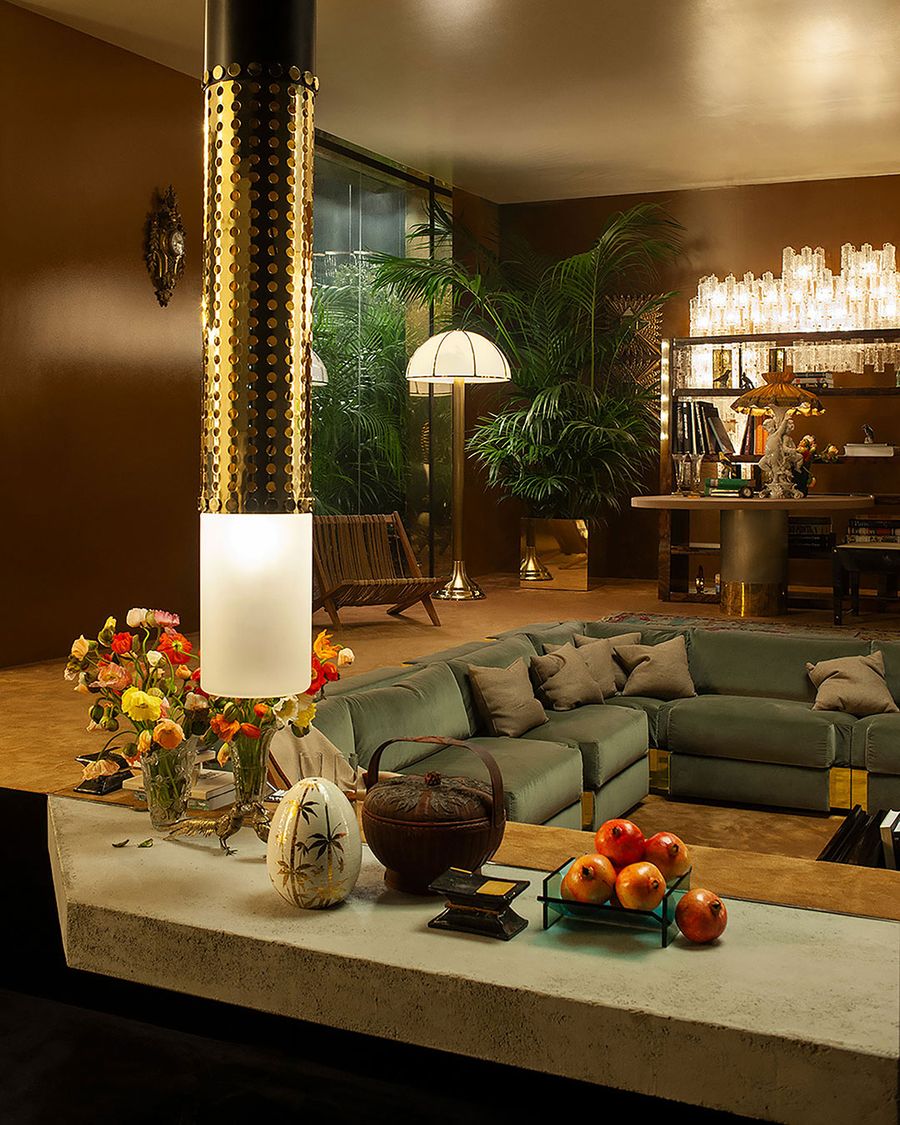
Photography © Loro Piana.

Photography © Loro Piana.
The Quarona poufs and coffee tables, for example—part of a collection of new furniture pieces by Dimorestudio for Loro Piana Interiors—envelop visitors in cashmere Ladakh and wool and alpaca Incas, while their curving wooden forms suggest an elegance that is more felt than flaunted. From the same collection, the Varallo round bed and Locarno cabinets continue the dialogue between sensual materials and sophisticated forms, offset by mirrored surfaces and brass details that catch and bend the moody light.
Lighting plays an essential supporting role. Sculptural pieces by Dimoremilano like the Bullet ceiling lamp and the Bodice floor lamp lend the rooms a cinematic chiaroscuro, while the Snooker and Corner seating collections, also by Dimoremilano and upholstered in Loro Piana Interiors fabrics, offer plush anchor points for imaginary guests to recline and ruminate. Moran sums it up best: “We blended Loro Piana’s DNA with the Dimoremilano aesthetic throughout—the use of Italian excellence in craftsmanship, sophistication in the choice of materials, and the utmost quality.”
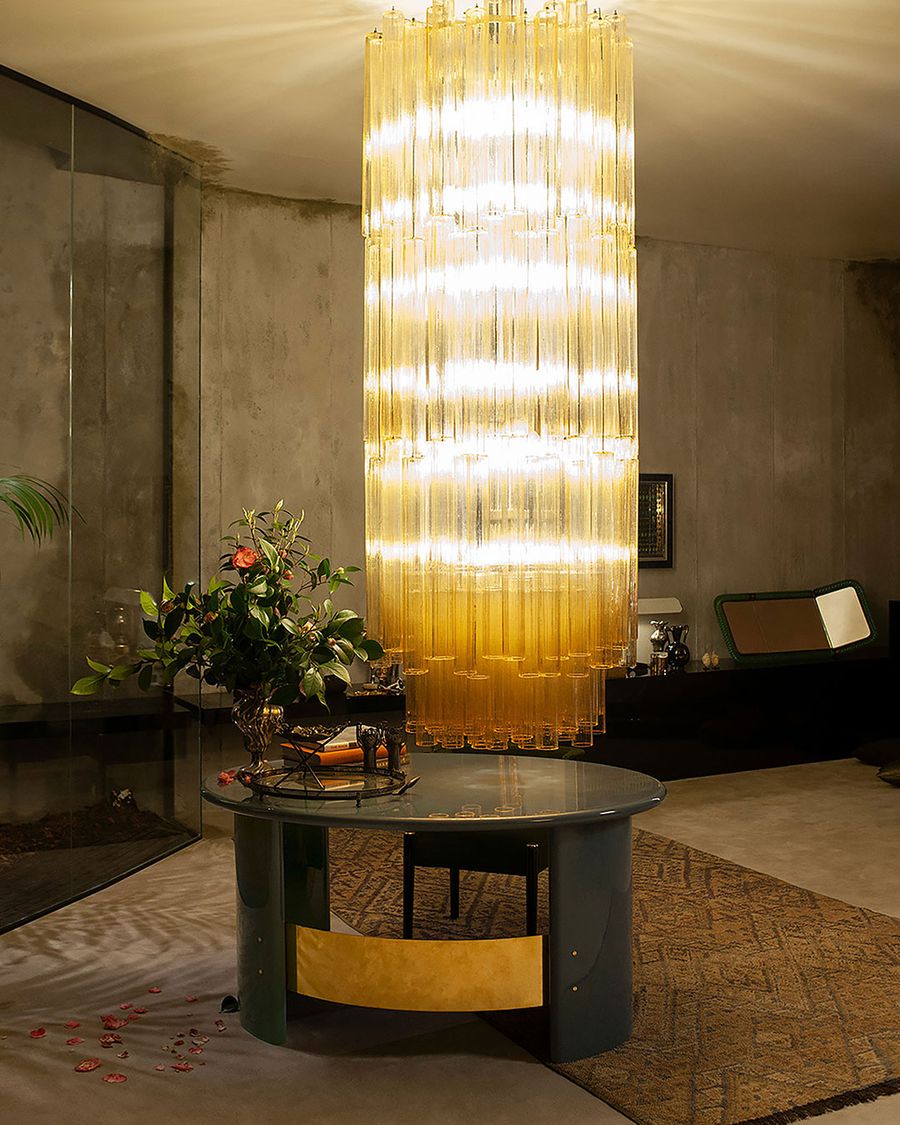
Photography © Loro Piana.
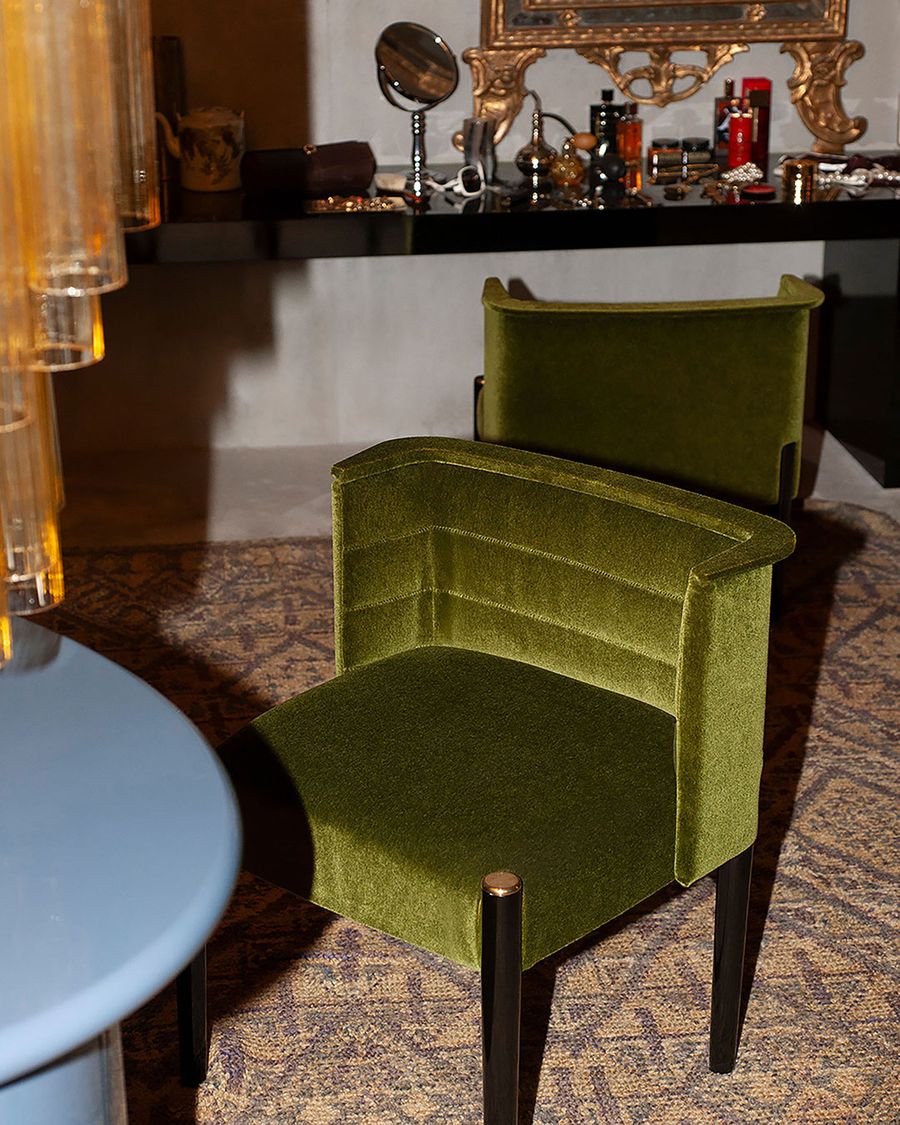
Photography © Loro Piana.
Video © Loro Piana.
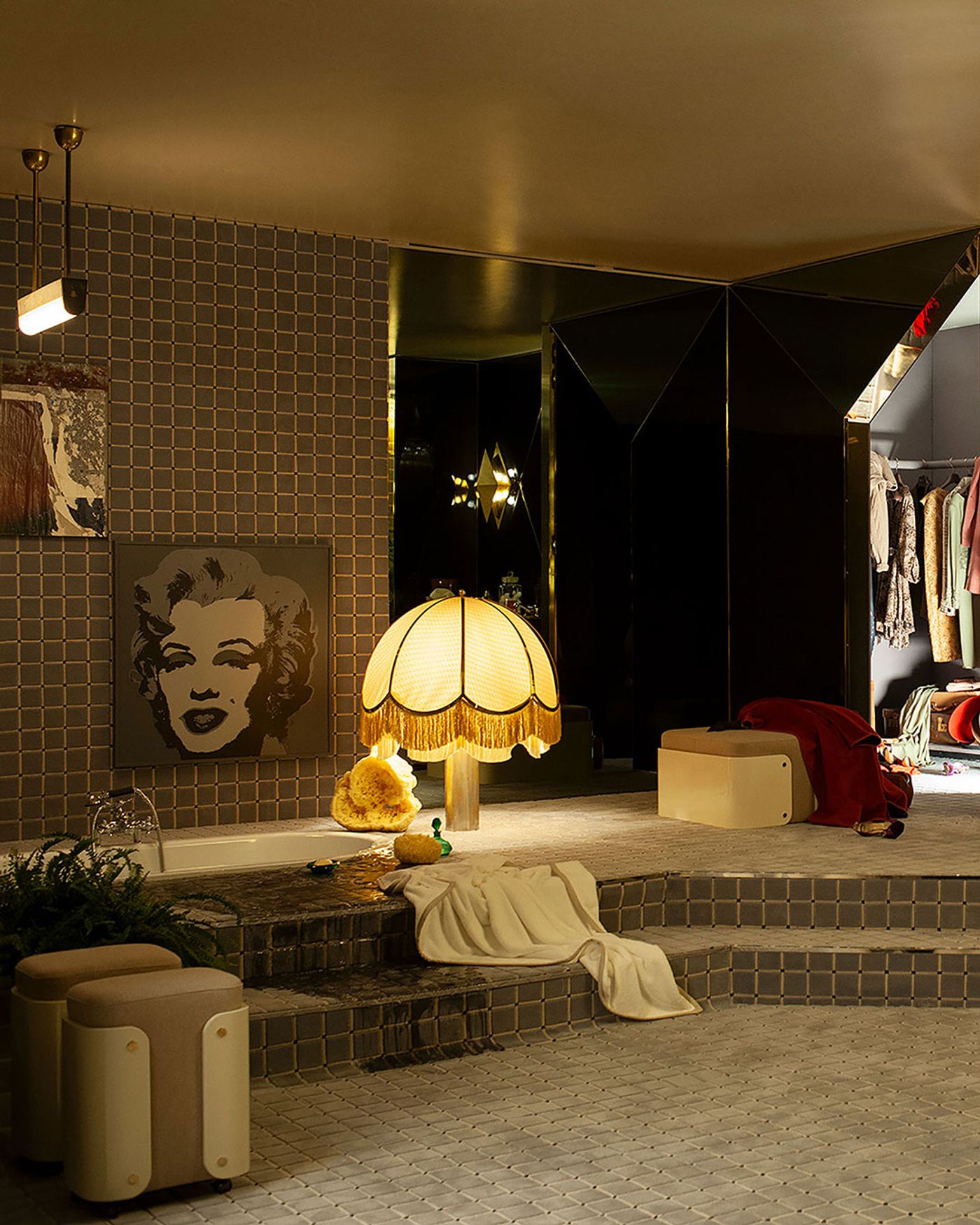
Photography © Loro Piana.
Video © Loro Piana.
Video © Loro Piana.
The drama escalates in the dining room. Centred on the Valsesia dining table—a showstopper from Loro Piana’s Dimorestudio-designed new pieces featuring a lacquered wood top complete with an Altai wool and cashmere fabric inset—the setup also includes Loro Piana’s new Punti a Maglia porcelain tableware collection, many pieces of which lie shattered on the floor—an unexpected gesture that reads less like destruction and more like a visual echo of an emotional crescendo. This scene, both deliberate and theatrical, furthers the installation’s haunting ambiguity. Have the guests left in a hurry? Did something unspoken happen here? Or is it simply the poetry of a quiet night, left in the wake of a loud day?
It’s this alchemical fusion of stillness and tension, of reality and fiction, that makes La Prima Notte di Quiete a standout of Milan Design Week, also providing the rare pleasure of slipping away from the week’s clamorous crowds into a few quietly transporting minutes of cinematic reverie.
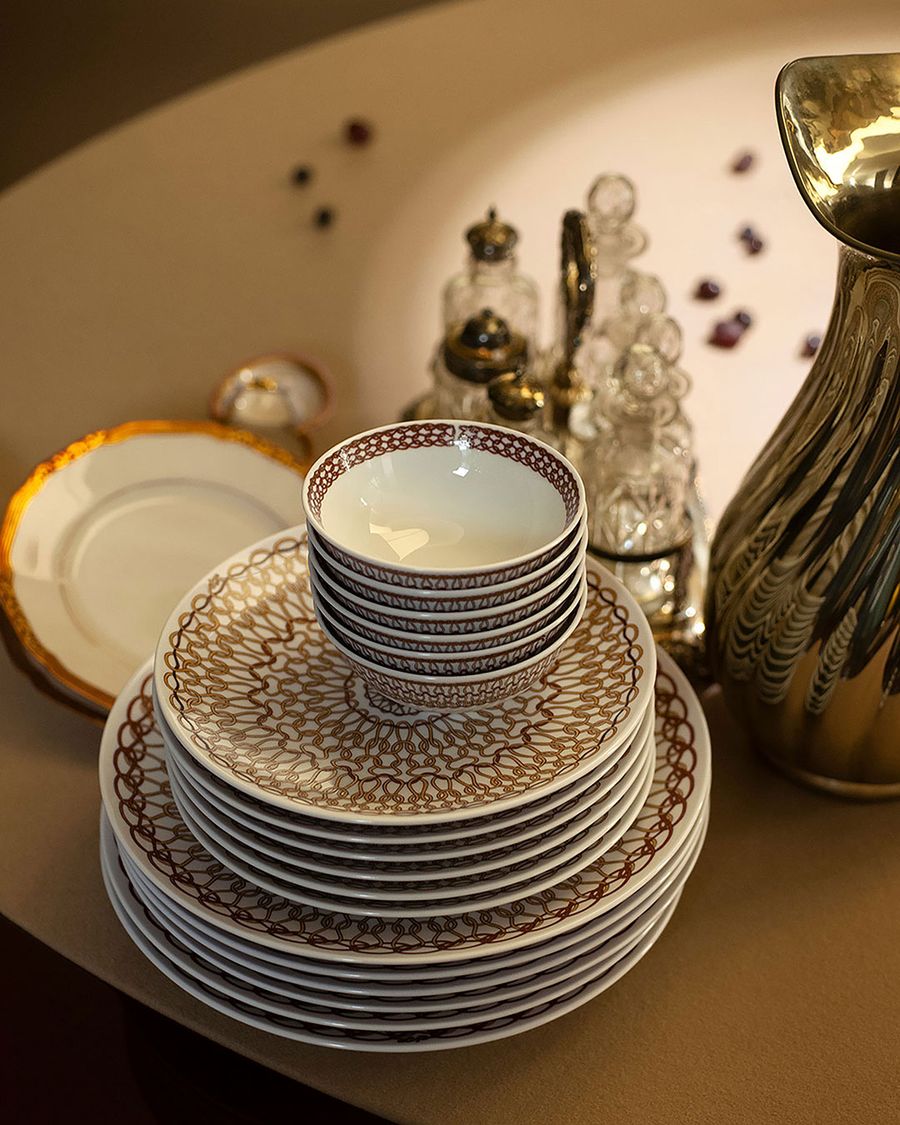
Photography © Loro Piana.
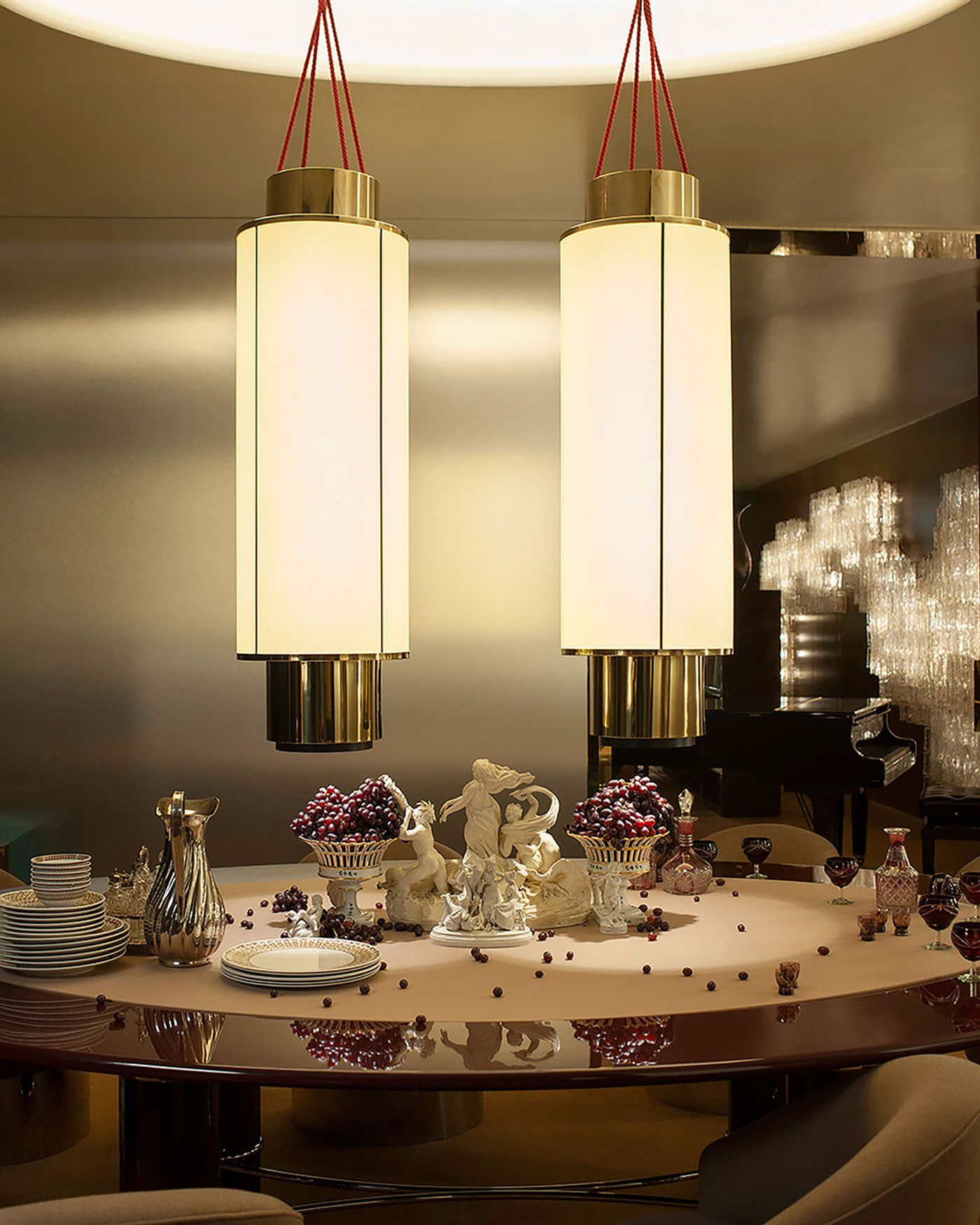
Photography © Loro Piana.
